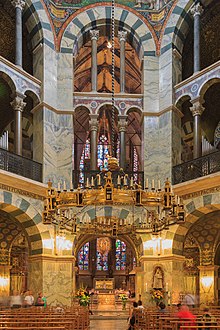
Alcuin of York – also called Ealhwine, Alhwin, or Alchoin – was a scholar, clergyman, poet, and teacher from York, Northumbria. He was born around 735 and became the student of Archbishop Ecgbert at York. At the invitation of Charlemagne, he became a leading scholar and teacher at the Carolingian court, where he remained a figure in the 780s and 790s. Before that, he was also a court chancellor in Aachen. "The most learned man anywhere to be found", according to Einhard's Life of Charlemagne, he is considered among the most important intellectual architects of the Carolingian Renaissance. Among his pupils were many of the dominant intellectuals of the Carolingian era.
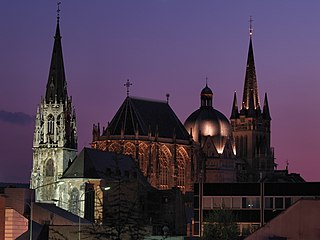
Aachen is, with around 249,000 inhabitants, the 13th-largest city in North Rhine-Westphalia, and the 28th-largest city of Germany.

Carolingian minuscule or Caroline minuscule is a script which developed as a calligraphic standard in the medieval European period so that the Latin alphabet of Jerome's Vulgate Bible could be easily recognized by the literate class from one region to another. It is thought to have originated before AD 778 at the scriptorium of the Benedictine monks of Corbie Abbey, about 150 km (93 mi) north of Paris, and then developed by Alcuin of York for wide use in the Carolingian Renaissance. Alcuin himself still wrote in a script which was a precursor the Carolingian minuscule, which slowly developed over three centuries. He was most likely responsible for copying and preserving the manuscripts and upkeep of the script. It was used in the Holy Roman Empire between approximately 800 and 1200. Codices, pagan and Christian texts, and educational material were written in Carolingian minuscule.

Aachen Cathedral is a Roman Catholic church in Aachen, Germany and the seat of the Roman Catholic Diocese of Aachen.
Carolingian schools comprised a small number of educational institutions which had a major share in the Carolingian renaissance, specifically cathedral schools and monastic schools.
The Epistola de litteris colendis is a well-known letter addressed by Emperor Charlemagne to Abbot Baugulf of Fulda, probably written sometime in the late 780s to 800s (decade), although the exact date is still debatable. The letter is a very important witness to the Carolingian educational reforms during the Carolingian Renaissance from the late 8th century to the 9th century. The letter shows Emperor Charlemagne's interest in promoting learning and education within his empire.
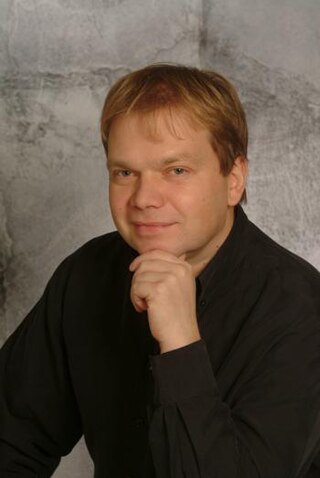
Andreas Boltz is a German church musician and composer. From autumn 1993 until 2011, he was the Regional Cantor of the diocese of Mainz in Darmstadt. He was awarded the Premio Speciale in 1992 at the International Composers Competition in Trieste. Since June 2011, he has been cathedral music director at the Frankfurt Cathedral.

Karolus magnus et Leo papa, sometimes called the Paderborn Epic or the Aachen Epic, is a Carolingian Latin epic poem of which only the third of four books is extant. It recounts the meeting of Charlemagne, king of the Franks, with Pope Leo III, in AD 799.
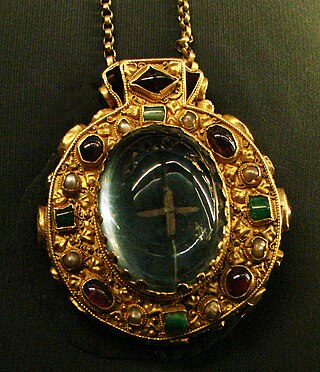
The Talisman of Charlemagne is a 9th-century Carolingian reliquary encolpion that may once have belonged to Charlemagne and is purported to contain a fragment of the True Cross. It is the only surviving piece of goldwork which can be connected with Charlemagne himself with some degree of probability, but the connection has been seriously questioned. The talisman is now kept in Rheims in the Palace of Tau.

Roland Büchner is a German church musician and conductor. He has been the director (Domkapellmeister) at the Regensburg Cathedral, conducting the boys' choir Regensburger Domspatzen.
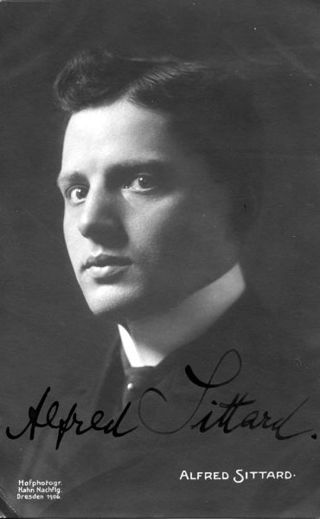
Alfred Sittard was a German cantor, composer of church music and one of the most important organists of his time.

Carl Josef Thiel was a German organist, church musician and professor of music.
Franz Fleckenstein was a German church musician, priest and composer.
Heinrich Weber was a German composer and organist.
Eberhard Metternich is a German catholic church musician, school musician, singer, cathedral kapellmeister and professor for choral conducting in Cologne.
The Sinfonieorchester Aachen is the concert and opera orchestra of the Theater Aachen. It consists of about 70 musicians and performs about 140 times a year. The regular symphony concerts take place in the Eurogress Aachen.
Viktor Scholz is a Russian-German church music director and concert organist.

Rudolf Pohl was a German Catholic prelate, musician, and choral conductor based at the Aachen Cathedral, where he led the Aachener Domchor to international recognition and revived a school for its boys' choir. He edited sacred music by Johannes Mangon, who had worked at the Cathedral in the 16th century.
Wolfram Menschick was a German Catholic church musician, composer and academic teacher. From 1969 to 2002 he was responsible for the church music at Eichstätt Cathedral, also serving the Diocese of Eichstätt as music director and organ expert. He was a bell expert, a member of a national council. From 1986 to 2000, he was a professor at the University of Music and Performing Arts Munich. His compositions, including 36 masses, are frequently performed.
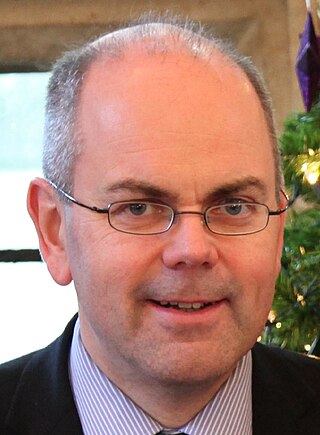
Messe in A is a mass in A major by the English composer Christopher Tambling. The first version was published in 2010, scored for two high voices, the second of them optional, accompanied by organ with optional strings. It was written with boys' choirs in mind, but is also suitable for girls' choirs and women's choirs. A version for four-part choir, organ and optional orchestra was published in 2016.
